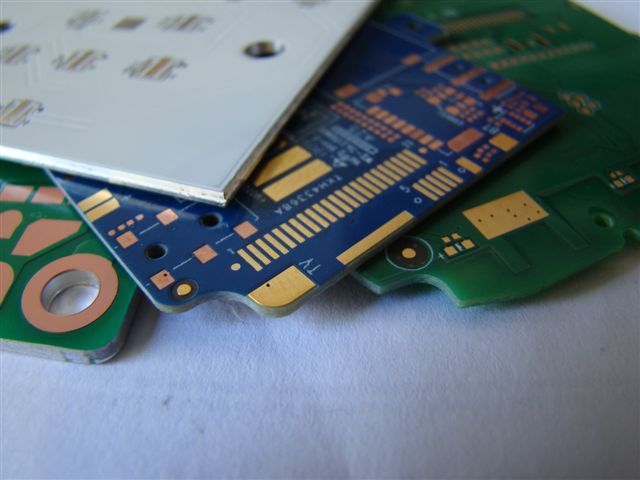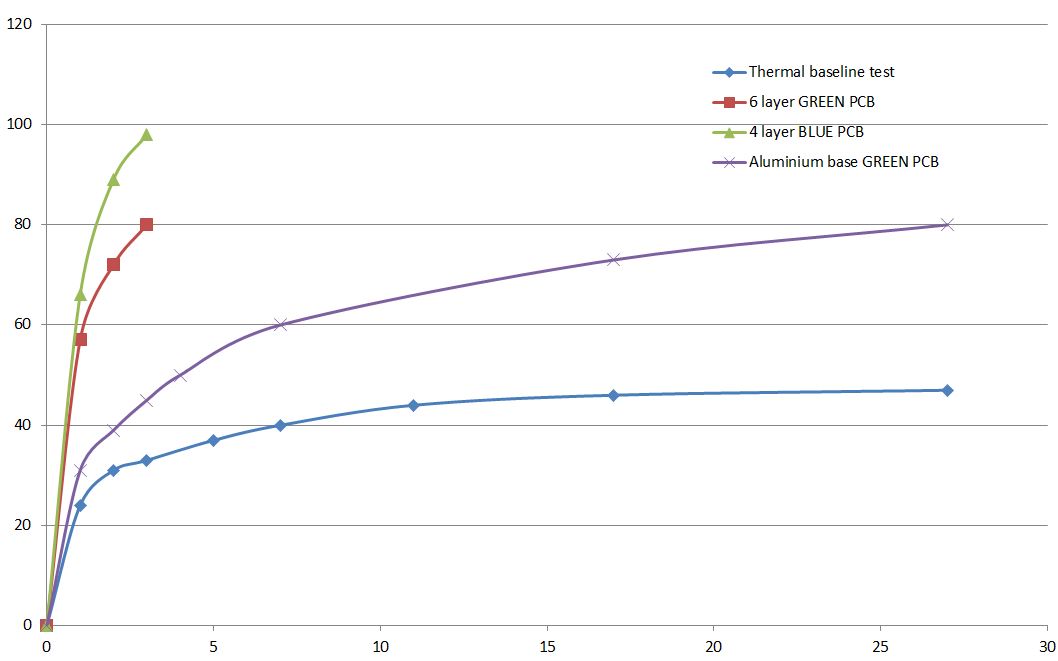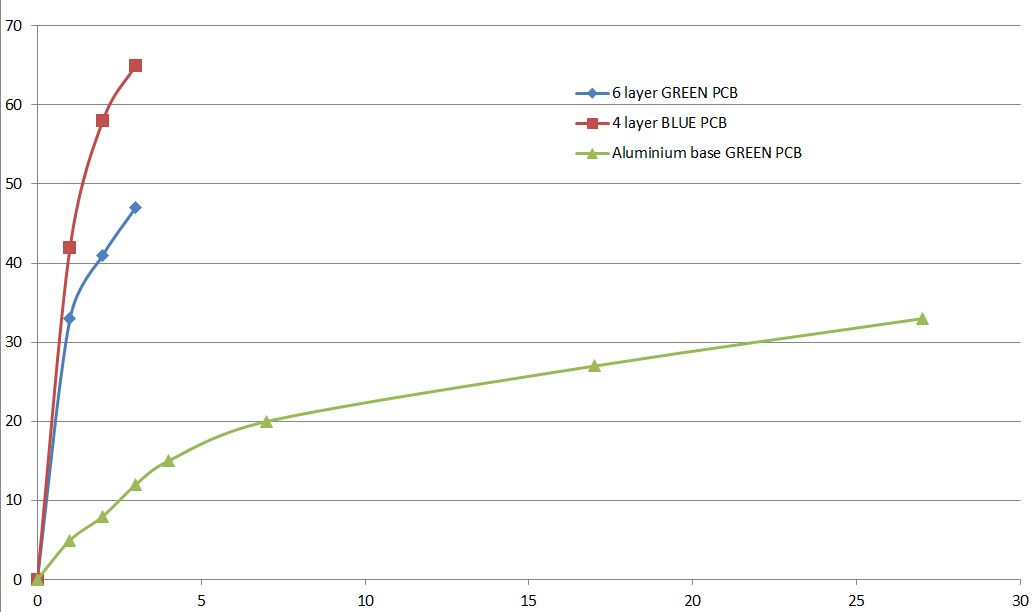Manufacturing in China Blog
Here you can leave comments and start discussions about manufacturing parts of complete products in China.
Research - Aluminium Printed Circuit Boards (PCB) tested for thermal conductivity
- Hits: 15349
- 0 Comments
- Subscribe to updates
- Bookmark

There are many test results floating around the internet talking about thermal conduction of heat sinks or other dedicated heat dissipating devices. This test focus on PCB’s thermal parameters that concern developers during the design stages of high power circuits. We are going to test 1.7mm Aluminium PCB, 4 layers PCB and 6 layers PCB.
The test device consists of power diode that dissipates 25Watt of heat and aluminium heat sink of fixed size and airflow. We measure temperature of the diode at fixed load and subtract ambient temperature from it to get ‘temperature rise above ambient’. To test PCB thermal conduction we sandwich fragment of PCB between diode and heat sink, therefore adding thermal resistance. By comparing ‘base line’ values to newly generated data, we can see how much thermal insulation each fragment of PCB have added to the system.
First we will create the ‘base line’ test that indicates test device native performance. This will allow us to subtract those values at the later stage from performance figures obtained during the Printed Circuit Boards tests. Data table below is representation of the raw data collected. PCB manufactures normally do not indicate thermal conduction values of the PCB’s, unless it’s aluminium or copper based printed circuit board that is designed with heat dissipation in mind. What we have found intriguing is that 6 layer PCB thermally is more conductive that 4 layer PCB. At a closer look this is due to more copper been present in the same volume of PCB material. Copper acts as a heat conductor and help heat to travel between the layers of the PCB, displacing space otherwise occupied by thermal insulator: fiberglass.
We have been pleasantly surprised by excellent thermal conductance of Aluminium PCB used for LED lighting solutions. It generated temperature rise of 33C after 25 minutes. This is excellent considering that 4 layer PCB caused power diode thermal runaway due to temperature rise exceeding 70C after just 4 minutes of operation. A second chart on the right indicates component temperature rise over the ‘base-line’.



The above data indicate that when designer have a concern about thermal loan on components placed on PCB, he may employ number of ways to reduce this load, including use of more layers of copper, assuming this do not contribute to total PCB thickness. Even if this layer play no other role but heat conduction. Attaching PCB to a chassis or heat sink can also be an effective method but have to be designed around it due to necessity to place fasteners and power components on the PCB above the area of contact with heat absorber.
Conclusion:
Many PCB manufacturers including suppliers of PCB from China, do not provide thermal performance parameters for the product. At above test results indicate, there is a great degree on performance difference between the boards with different number of layers. There will be also a great degree of difference in performance between different manufacturers using various compounds and materials in making the actual dielectric itself. Ideally, each PCB should come with certificate indicating it’s performance including thermal to allow the engineers to better harness additional effect of the thermal conductance offered by PCB itself.
By Jenny Paddy
Comments